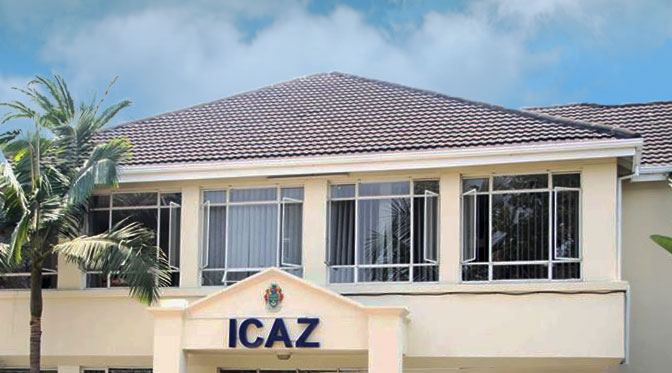RBZ adamant inflation taking downtrend path
The Reserve Bank of Zimbabwe (RBZ) is adamant the inflation outlook remains positive after the annual rate retreated by 12,4 percentage points to 75,2 percent for April 2023 although the monthly rate charged on weakening local currency.
This comes as the central bank prepares to roll out gold-backed digital tokens, which it says will mop up excess liquidity from the market and help stabilise the value of the floundering local currency.
Amid rising pressures from the pass-through effects of the depreciating Zimbabwe dollar, the central bank said authorities would tighten their monetary and fiscal policy stance to curtail further price increases.
“The year-on-year inflation rate (Annual percentage change) for the month of April 2023, as measured by the all-items Consumer Price Index (CPI) was 75,2 percent,” the Zimbabwe National Statistics Agency (ZimStat) said.
At 75,2 percent, Zimbabwe’s annual consumer price inflation eased again to a ten-month low. On a monthly basis, consumer prices surged by 2,4 percent in April, the most in six months, after decreasing by 0,1 percent in the prior month.
The monthly increase reflects the effect of Zimbabwe dollar-priced products in the consumer price basket, which have recently registered marked increases on account of US dollar price indexing.
The Zimbabwe dollar has weakened considerably against the greenback, both on the official interbank and parallel markets, but authorities still expect it to hold firm going forward, as they introduce new measures and the tobacco-selling season progresses and boosts US dollar liquidity.
Analysts believe the success of the policy measures to stabilise the exchange rate, and lower inflation, rests on the efficacy of strategies to manage excess liquidity from funding public infrastructure projects.
The month-on-month food and non-alcoholic beverages inflation rate was minus 1,2 percent in April 2023, shedding 1,5 percentage points on the March 2023 rate of 0,3 percent. The month-on-month non-food inflation rate was 5,1 percent, gaining 5,1 percentage points on the March 2023 rate.
Zimbabwe’s annual inflation climbed to a two-year high of 284,94 percent last year while the monthly rate peaked at 30,2 before a coterie of fiscal and monetary policy interventions set it on a sustained decline trajectory.
The rate has previously peaked at a post-dollarisation high of 837,5 percent, in August 2019, before the introduction of a foreign exchange market forced inflation to trend down to a low of 50,1 percent by July 2021.
Fiscal and monetary authorities hastily unveiled a series of policy moves mid-last year to halt the precipitous fall of the Zimbabwe dollar, a development that had a huge negative impact on the exchange rate and inflation for most of 2022.
The measures included a sharp hike of the bank policy rate, which caps commercial bank lending rates, from 80 to 200 percent (now 150 percent) to curb speculative borrowing, and value-for-money audits that curtailed excessive invoicing on public contracts.
Additionally, the central bank minted and issued large and small denomination gold coins as part of a slew of policy measures to lower inflation as well as stabilise the exchange rate and inflation.
Speaking in an interview this week, RBZ Governor Dr John Mangudya said the annual inflation decline augured well for plans by monetary authorities to introduce new measures to stabilise the local currency.
“Inflation, which has also declined in US dollar terms, is expected to further decline, so the outlook is very good. Going forward, inflation will continue to decline due to stabilising local currency, as the RBZ expects to introduce gold-backed digital tokens.
“The god-backed digital token will act as a store of value, and secondly they can be used for transactions. By doing so, this will mop up all the excess liquidity in the market, and stabilise the currency,” Dr Mangudya said.
Tentatively, the gold-backed digital gold coins will be introduced in the first week of May, 2023. Prior to their introduction, Dr Mangudya said, the central bank will publish the terms and conditions of the gold-backed digital tokens.
The tokens will be a form of electronic money backed by the country’s gold reserves, which will be held by the central bank. The RBZ wants people holding Zim dollars to be able to exchange their money for the gold-backed token to help them hedge against the volatility of the local currency.
While physical currency is still widely used all around the world, people in some countries have been using it a lot less lately, especially during the Covid-19 pandemic, with its cash shortages and hygiene concerns.
As people shift away from cash, many are increasingly turning to digital financial transactions. Globally, banks and financial institutions process far more transactions digitally than they do in physical branches.
A variety of recent digital disruptions, including the emergence of cryptocurrencies and blockchain technology, have made waves in the financial services sector. Digital currencies are part of that story, and central banks have started to take note.
Central bank digital currencies (CBDCs) are the digital form of a government-issued currency that isn’t pegged to a physical commodity. They are issued by central banks, whose role is to support financial services for a nation’s government and its commercial-banking system, set monetary policy, and issue currency.
Economist Persistence Gwanyanya, a member of the central bank’s monetary policy committee, said the resurgence of steep price increases was being driven by the depreciation of the local currency in a country where prices are indexed to the greenback.
The Zimbabwe dollar, he indicated, was sliding on account of the excess liquidity finding its way into the market.
Gwanyanya said the structure of the economy was such that the Government needed to pay contractors for the infrastructure projects being undertaken across the country, including road and dam construction.
“It gets us to a dilemma, if not a trilemma, that the Government has to pay; it also has to pay in time, but each time they do that, we see the rate running. So, it simply shows the structure of the economy.
“Sadly, the economy is concentrated in the hands of a few; if you get $100 million (ZWL) today what do you do?…contractors are getting billions (of Zimbabwe dollars) for the work that they would have done.
“We expected that (depreciation and inflation), but at the same time you cannot say to the Government not pay, they have to pay and they have to honour their obligations, but in the current environment paying Zimbabwe dollar, any amount…(people) obviously try to offload (for USD on the parallel market).
“But we need to come up with a solution within the context of the structure of the economy and challenges that confront us today.
“It is not about money supply in my view, but the management of the liquidity, managing the payments (to suppliers), the question is, Are they not doing that? I think they are, but given what is happening, there is need to do more.
“What more do (they) need to do, (they) need to stagger the payments…the temptation for anyone who receives Zimbabwe dollar payments is to offload (on the parallel market),” Gwanyanya said.
He also said the Treasury needed to increase the proportion of payments settled in US dollars to cover the imported raw material or inputs that Government contractors require and for which they also seek US dollars on the parallel market.-ebusinessweek










